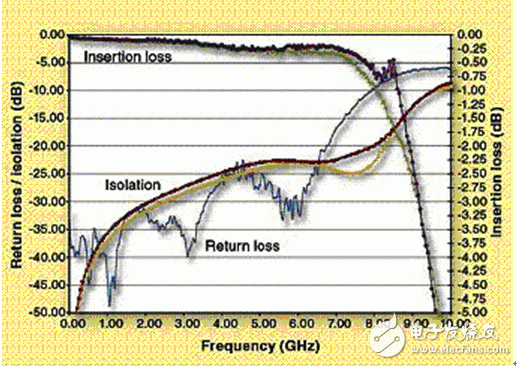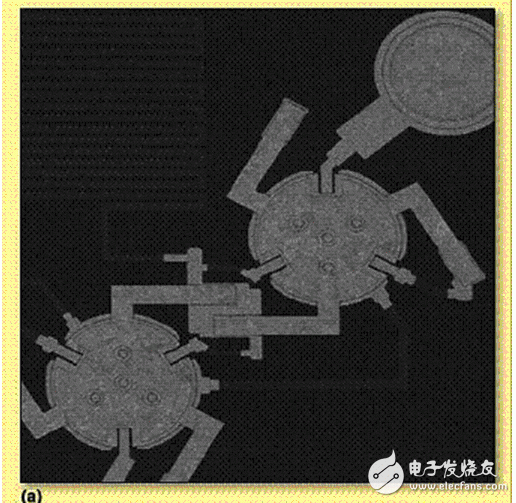Introducing new MEMS solutions Summary of the development advantages and trends of MEMS switching technology The DPDT switch integrates two independent SPDT switches in the package, reducing the size, cost and complexity of the entire switching system SP4T switch minimizes overall switch size by integrating gate resistors 26.5GHz SPDT switch for extremely high signal integrity switching control, supporting differential signal applications with data rates up to 20Gbps Because MEMS switches are fabricated using semiconductor manufacturing processes, they are packaged in a surface mount package to achieve a very small form factor. The existing mass production technology is adopted, and the process is actively improved to rapidly reduce the device cost when the output is increased, and the production of the MEMS switch can be formed into a large scale. The use of adaptive semiconductor quality control technology in the manufacturing process of MEMS switches can achieve quality comparable to other semiconductor devices (defect level is in the order of ppm), and continuously improve the lifetime reliability of MEME switches. This makes MEMS switches a more significant advantage over other switching technologies. Compared to other mechanical relays (electromechanical and reed relays), MEMS switches are smaller in size, have lower insertion loss, greater bandwidth, and faster switching speeds. Compared to semiconductor switches (FETs and PIN diodes), MEMS switches have lower insertion loss, higher linearity, greater bandwidth (full DC operation), and greater power handling. Most importantly, the research and application of MEMS switches has just begun, and it is expected to further improve its performance and reliability in the future. TeraVicta has introduced three new MEMS switch products to address the switching technology challenges. This includes the addition of a DPDT (double pole double throw) and SP4T switch to the existing 7GHz switch series, as well as a new high performance 26.5GHz SPDT switch. The DPDT switch integrates two independent SPDT switches in one package, reducing the size, cost and complexity of the entire switching system. The device size is further compressed by integrating thin film resistors within the gate line (within the device package), especially for building ATE applications with hundreds of switches (eg DUT load boards). All three switches are available in 3.8 & TImes; 5.1mm mini-BGA chip scale package, pre-planted with Pb/Sn and RoHS-compliant solder balls. Like the DPDT switch, the SP4T switch minimizes the size of the entire switch by integrating the gate resistor. The SP4T uses this hybrid structure to implement the same functionality previously only possible with coaxial electromechanical relays in a mini-BGA package. The SP4T supports the high-performance fan-out capability required for signal multiplexing in test and instrumentation applications (as shown in Figure 3). It also supports band and filter switching applications for wireless systems, which typically require low insertion loss and high Linearity and low power consumption. The SP4T switch's compact surface mount package enables the construction of a high-performance 4&TImes;4 switch matrix on a PC board instead of a rack-mount system using coaxial switches. Figure 3: Performance of a 7GHz SP4T switch. The high performance 26.5GHz SPDT switch greatly enhances the performance of the TeraVicta family of switch products. As shown in the SEM image in Figure 4, this switch integrates dual HFDA on each leg of the SPDT switch, integrates a thin film resistor in the gate line, and integrates a bias resistor on the switch beam [3] ]. Using the same HFDA technology ensures that this 26.5 GHz switch has the same reliability, power handling and linearity as the previous 7 GHz series of switches. Figure 4: SEM image of a 26.5 GHz SPDT switch. It integrates dual HFDA on each leg of the SPDT switch. Figure (a) is a top view of the SPDT and (b) is a side view. The RF performance of the 26.5 GHz SPDT switch is shown in Figure 5. Its insertion loss is less than 0.4dB in the frequency range from DC to 12GHz, and the insertion loss is less than 0.9dB at the highest 24GHz frequency. It has an isolation greater than 30 dB in the frequency range from DC to 12 GHz and greater than 18 dB at frequencies up to 26 GHz. Its return loss is better than 17dB over the entire switching bandwidth from DC to 26.5GHz. Based on the above characteristics, this 26.5GHz SPDT switch can achieve extremely high signal integrity switching control in applications with bandwidths above 15Gbps, and can support differential signal applications with data rates up to 20Gbps. This bandwidth is sufficient for accurate testing of next-generation high-performance processors, DSPs, FPGAs, and storage subsystems. Most of these devices and systems integrate high-speed interconnect protocols such as SRIO (serial rapid IO), PCIe ( PCI Express) and 10Gb Ethernet (10GE/OC-192). Emerging applications in digital test, instrumentation, and wireless communications require high-performance switching products. Future applications will continue this trend – requiring wider bandwidth, lower losses, higher resistance repeatability and higher linearity. Switching product suppliers represented by TeraVicta will continue to take advantage of MEMS switching technology to drive the development of next-generation switching products to meet the needs of the latest applications.
With the development of the times, the consumption level of people is gradually increasing. At the same time, people's entertainment methods are beginning to diversify, especially for modern young people. As a result, different kinds of electronic products are starting to be in people's lives, and the booming Electronic Cigarette industry reflects this.
Described including the upper shell, the upper shell at the top of the smoke outlet, as described in the bottom of the upper shell with airway, described with the smoke outlet in the airway and also to match the upper shell, the lower part of the shell described the airway in the direction of the lower shell extension, as described in the lower shell near one end of the upper shell is equipped with oil mouth, described the lower shell with batteries, described at the bottom of the bottom shell has come in The air port is provided with an oil storage bin in the lower shell, and the air passage passes through the oil storage bin and is provided with a heating atomization bin at one end away from the smoke outlet. The utility model has beneficial effects: it can meet the smoking habit of different users, avoid the premature end of the use experience caused by excessive consumption of smoke oil, and indirectly prolong the service time and life of the product.
Refillable E-Cig Oem,Refillable Vape Pod,Refillable Vape Pen Oem,Refillable Mod Oem Shenzhen MASON VAP Technology Co., Ltd. , https://www.cbdvapefactory.com



Central issue:
May 20, 2023